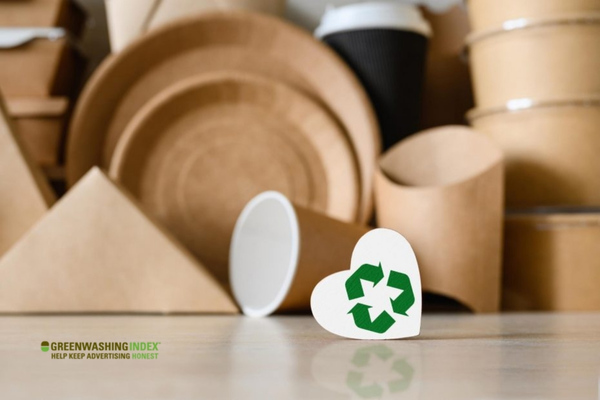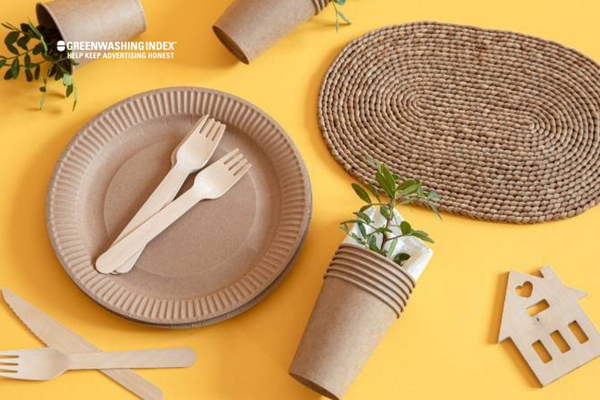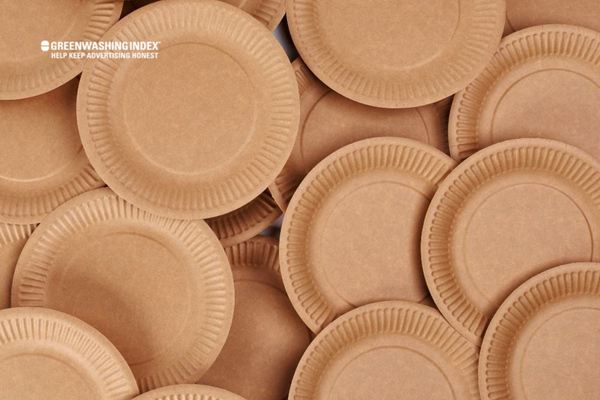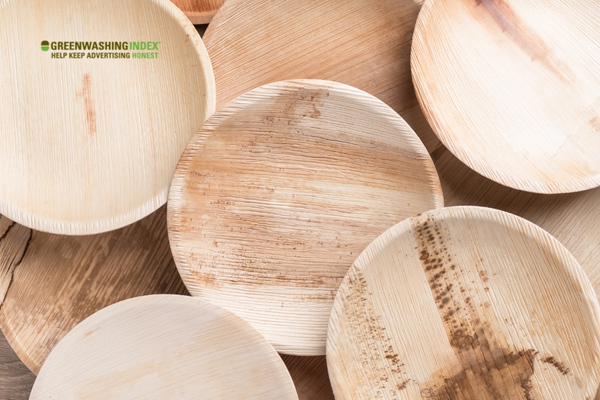

The environmental impact of everyday items often goes unnoticed, and paper plates are no exception. While they offer convenience during gatherings, their true sustainability is questionable. Many people assume that using paper plates is a responsible choice; however, the reality reveals a troubling narrative of waste and pollution.
As we explore the implications of these seemingly innocent disposables, it becomes clear that they may not be the eco-friendly option we hope for, but rather silent polluters contributing to environmental degradation.
When it comes to paper plate recycling, there are a few nuances we need to understand. Let’s dive right into the recyclability of paper plates and what exactly that means for our environment.

Why is recyclability important, and how does it apply to everyday items like paper plates? Recyclability is all about assessing products based on their ability to return to the production cycle without degrading their quality or usability. When it comes to recycling, not all materials are created equal.
Recycling paper products has pretty specific criteria:
Paper plates often fall short because they frequently contain food waste and grease. Plus, many of them have a thin plastic lining (to make them waterproof), which disqualifies them from being recycled like normal uncoated paper products.
Here’s what makes a product recyclable:
Do most paper plates meet these standards? Unfortunately, they don’t. Because they’re designed for single use with food items, the residue left behind can contaminate the recycling batch. This means we’ve got quite a conundrum on our hands – convenience at potentially high environmental costs.
Understanding how something gets recycled might change your perspective on using disposable products in general:
Step 1: Collection
Firstly, our used plates would have to make it into the appropriate bin – which often isn’t the case as many people toss them out with regular garbage due to contamination by food.
Step 2: Sorting
The collected materials then go through an intense sorting process:
If our hypothetical clean and uncontaminated plate passes this test (though rare), we move on!
Step 3: Pulping
In this phase:
Again, those pesky coatings pose an issue here unless specialized facilities can handle them.
Step 4: Decontamination
This is crucial as any remaining impurities are removed at this stage:
Step 5: Drying & Shaping
The purified pulp gets pressed and dried into sheets, which are then ready for:
The final product might not even recall its humble beginnings as your picnic dinner holder. But remember – most paper plates don’t make it through this journey due mostly to contamination issues mentioned earlier.
Technically speaking, some types could be recyclable under perfect circumstances, but most aren’t due to either structural design features or improper disposal in everyday life. This definitely skews their standing towards being silent polluters rather than eco-friendly disposables.
So next time you’re packing for that outdoor barbecue bash or setting up for an easy cleanup event, think twice because even though those little disposable heroes seem innocuous enough, they may just pose bigger headaches down the line when trying to balance convenience with environmental ethics!
When we think of paper products, it’s easy to jump to the conclusion that they’re inherently eco-friendly – after all, they’re not plastic, right? But this is where we need to hit the brakes and ask ourselves: Are we overlooking details when it comes to seemingly innocuous items like paper plates?

Disposable paper plates are everywhere – from picnics and barbecues to birthday parties. They give us the ease of not dealing with a pile of dishes afterward. However, despite their convenience, these single-use friends may be more foe than friend to Mother Nature. Let’s break down how:
By highlighting these points, it becomes clear that the path from our kitchen tables to landfills is shorter for disposable paper plates than most other products.
We love our conveniences, and I get it; who doesn’t? But sustainability requires us to weigh these conveniences against their environmental costs:
Let’s consider some ways we can balance this scale:
Balancing convenience with eco-consciousness isn’t about swinging from one extreme of self-denial to another extreme of wastefulness – it’s about being informed and mindful of our choices.
Incorporating factors like these makes me seriously wonder whether what seems eco-friendly on the surface might indeed be a silent polluter upon closer inspection. As someone who holds our planet dear,I believe that taking such reflections into account is essential if we’re aiming for truly sustainable living patterns now and moving forward into future decades on this beautiful shared home—our Earth.
When I host a backyard barbecue or have a bunch of kids over for a birthday party, paper plates are often my go-to for easy cleanup. But as someone who cares about the environment, I’ve had to ask myself what’s really going on behind the scenes in paper plate manufacturing.

Are they an eco-friendly choice or am I unknowingly contributing to environmental harm? Let’s dive into the raw materials and production process of these disposable staples and evaluate their environmental footprint.
Breaking down the process of how paper plates are made shines a light on several factors: the resources we use, how we use them, and what kind of waste gets left behind. Here’s what typically goes into making these seemingly harmless products:
By-products Generated:
Taking all this into account, you can see just how resource-intensive it can be to produce something intended for single use—and that’s before considering any coatings added for durability or print designs applied for aesthetics.
Now let’s talk about those footprints my mom always reminded me not to track inside—only these aren’t mud; they’re carbon footprints:
And once those trucks roll out full of neat stacks ready for picnics everywhere:
Packaging: More resources used (plastic wrap, anyone?) and more energy consumed getting products onto store shelves.
Disposal: After mere minutes of use at your picnic table:
In understanding this chain reaction—all starting with my grabbing a pack off the shelf—I’ve realized it’s tough to justify calling traditional paper plates ‘Eco-friendly.’ Yes, even though they do start with biodegradable material—the trees—the story just isn’t as simple as I hoped when considering their lifecycle impact on our environment.
With each step highlighting not only resource use but subsequent waste creation too—it’s clear eco-friendliness falls short against silent pollution when talking about traditional paper plate production. This compels me (and should compel you, too!) to think twice before reaching for disposables at your next cookout or celebration.
When it comes to dining essentials, paper plates have long been a staple for picnics, barbecues, and other informal gatherings. However, as we become more conscious of our environmental footprint, it’s important to consider alternatives that are more sustainable and gentle on our planet. So let’s dive into some options that could take the place of your stack of disposable paper plates.

Reusable dinnerware is hands-down a better alternative compared to disposable paper plates when thinking about sustainability. Here’s why:
Let’s break down the positive impacts of opting for reusable dinnerwear:
It’s undeniable that switching to reusable dinnerware requires an initial investment and ongoing effort in terms of cleaning. But when considering the long-term benefits both environmentally and financially — it certainly pays off.
When I think eco-friendly disposables might be the perfect middle ground between convenience and sustainability. But are they truly green? To evaluate these claims:
Material Source:
Assessing Production Process:
Life Cycle Analysis:
Here are key points regarding eco-friendly disposables:
Evaluating eco-friendly disposables includes considering whether their convenience outweighs any potential drawbacks. When possible, choose items proven environmentally preferable through all stages, including disposal processes that align with your local resources.
Preferring reusable dinnerware is undeniably more sustainable in comparison with disposable paper plates while exploring bio-based disposables entails careful consideration of their holistic impact on our environment before labeling them as ‘green’.
As consumers, making informed decisions reflecting both ecological considerations and practicality plays a vital role in reducing our collective burden on Earth’s fragile ecosystems.
Not every type of paper is built the same. Some are laced with plastics, chemicals, or food residues that make the recycling process tricky and inefficient. That’s why stuff like greasy pizza boxes or certain glossy papers get booted from the recycling club.
Yeah, there are eco-friendly disposables out there made from materials like bamboo, palm leaves, or sugar cane that biodegrade way better than traditional paper plates. Just keep an eye out for third-party certifications to make sure they’re legit.
Easy steps include switching to reusable dishes for everyday meals and using compostable options for big events where you need disposables. Bringing your own containers for takeout is another game-changer in cutting down waste.
Paper plates can harm the environment due to low recyclability and contamination from food. Their production contributes to deforestation, and many are coated with plastic, complicating disposal.
The environmental implications of using paper plates are more complex than they appear. While they may seem like a convenient option for gatherings, many paper plates fall short of being eco-friendly due to issues such as contamination from food waste and plastic coatings that hinder recycling efforts.
This often results in them contributing to landfill waste rather than being sustainably disposed of. Ultimately, it sounds like we need to reconsider our reliance on these disposables and explore more sustainable alternatives to reduce our ecological footprint.

Don't let aphids, slugs, and caterpillars ruin another plant. Take back control with simple, natural methods that actually work.